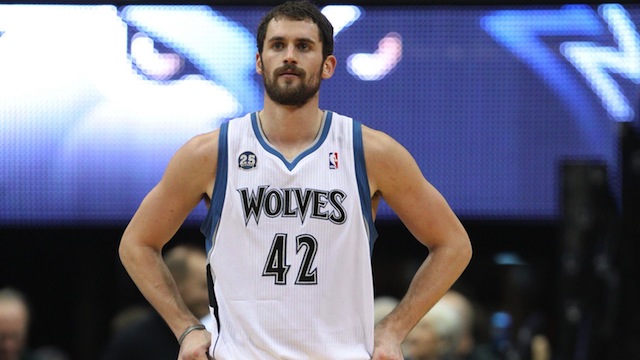What Frequent Fliers Should Learn From The Minnesota Timberwolves And Kevin Love

If the title of this post throws you off, let me explain. We’re currently in the middle of NBA free agency and while the big dominoes that were Lebron and Carmelo have already fallen, there’s still a lot of wheeling and dealing to be done. That includes the fate of Kevin Love, who isn’t a free agent this summer but has just one more year left on his contract with the Minnesota Timberwolves. He’s publicly stated that he does not want to return to Minnesota and will explore free agency next summer when his contract expires.
More than any other team sport, the fate of your NBA franchise can be carried on the shoulders of one superstar player. Superstar players don’t exactly grow on trees, and teams are willing to bend over backwards to get one. That’s why a disgruntled superstar going into the final year of his contract who plans to leave anyways can be a huge trade asset. As the Lakers learned the hard way with Dwight Howard, you should never ever let a superstar walk away without getting something in return. Bill Simmons has probably written a few 30,000 word columns like this one saying that exact thing a bunch of different ways.
Then head over to www.statusmatcher.com which provides a ton of useful information. First, it’s a great inventory of all the programs out there and includes directories of airline, hotel, and even car rental programs. Focusing on airline programs for now, you’d be surprised how many options are out there, and by my count they list out 87 total airline programs. I mean, before today how many of you had even heard of the S7 Priority program?
For each program, Status Matcher will also provide user reviews on what elite statuses people have used to match into that program, as well as the elite statuses people have been able to get by leveraging that program. For example, here’s some information from the Alaska Airlines page, which even includes detailed instructions on a featured status match promotion:
- There are two types of potential matches offered. Status matches, where you will receive outright a specified level of status that is generally closely equivalent to what you had before, and status challenges, which typically involves a fee and also having to demonstrate some loyalty by qualifying under a prorated amount of travel activity.
- In general, domestic airlines will only offer a status challenge, unless there is specific promotions available or they are targeting a specific airline’s customers, which has especially common to see during the recent mergers. Airlines within the same alliance will generally not allow a match.
- Status matches/challenges are generally offered just once per lifetime, although it’s very much YMMV. In some cases you can get them more often – for example my corporate policy states that they will offer a status match every five years.
- In addition to www.statusmatcher.com, this thread on FlyerTalk is a great resource for information on status matching
Unwilling to move down the elite ranks, I capitalized on a targeted offer from American Airlines to match my 1K status to Executive Platinum which is their top tier status and even scoring 8 systemwide upgrades to use in the process. After another year of flying just 25,000 miles, I was then able to leverage the AA EXP status to status match through my corporate travel agency back to United 1K. Next year, I status matched over to Alaska Airlines MVP Gold and even Emirates Gold for good measure.
So is it unethical or immoral to status match back and forth? In my opinion, absolutely not. Loyalty programs want to win your business, and status matches and challenges are their versions of coupons that you get for restaurants or free samples that you get at Costco. They are hoping that you will try it, like it, and eventually stay. So keep an eye out for opportunities to leverage your expiring elite status to obtain status with other programs, and never be status-less again.